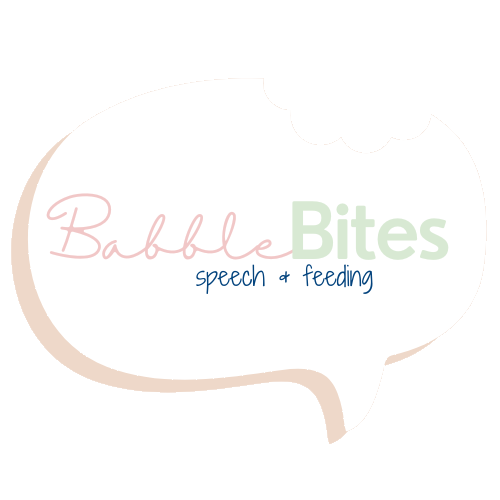How to Use Verbal Choices to Increase Your Baby’s Language Skills
What are verbal choices?
Once your baby is starting to imitate words and use new words independently, it can be hard to figure out how to get your toddler to use their new vocabulary. Giving verbal choices is an easy trick to help your toddler practice their new words, learn to use words to make requests, increase their independence, and decrease the time spent playing “the guessing game.” When you give verbal choices, you provide your child with two (sometimes three) clear choices. It can be very helpful to provide a visual of the two choices, as well (see below for a how-to).
How do verbal choices help you and your toddler?
When your child learns to respond with “yes” and “no,” you can find yourself asking your toddler, “Do you want this?” over and over again. This can be tiresome and frustrating for both you and your child. By giving verbal choices, you’re doing a few things to help your toddler:
You’re providing them with a verbal model that they can imitate, especially if they are not quite using their words independently yet, but are able to imitate words.
You’re giving two clear choices to choose from, thus, reducing the endless guessing game. Additionally, children actually do well with boundaries rather than giving them the sense of limitless options when we play the yes/no game with them.
You’re still providing a choice, giving your toddler the feeling of independence and autonomy over their own decisions.
You’re helping your child learn to use specific words to make requests, rather than just responding to yes/no questions to make their wants and needs known, helping to reduce their frustration (and yours!)
Playtime provides many opportunities to give your toddler verbal choices.
How to use verbal choices as a language strategy
Verbal choices can be used in many different scenarios throughout the day, including with food, toys, books, actions, clothing, and so on. In any situation where your toddler is able to make a choice, you can provide your child with the opportunity to use words to make their wants known. This strategy works best when your toddler is imitating words, and starting to use some words independently. Try using this strategy frequently throughout the day to help boost your child’s use of words to communicate.
Hold up one choice in one hand as you label it and slightly shake it (to bring your toddler’s attention to the item, so they know what you’re labeling), and then repeat with the second choice in your other hand (e.g. “Want apple or banana?” While bringing your toddler’s attention to each fruit, respectively, as you name it).
Pause and wait for your child to respond with their choice. When your toddler says the item they want, reward them by giving them the item, and reinforcing their use of words (e.g. “You want banana!” or, “Nice work using your words, you told me banana”).
If after waiting for at least 5 seconds while looking at your toddler expectantly (making eye contact, smiling, eye brows slightly raised), your child has not yet responded, or is gesturing only, you can repeat the choices (again while slightly moving each item in your hand to bring their attention to each choice/word).
If your toddler gestures towards one item, but doesn’t say the word, model the single word again for them (this may happen too if the word is more difficult to say - see more on word approximations and early developing speech sounds here). If this is a word you’ve heard your child say a few times before (either independently, or in imitation), try the gentle withholding strategy, otherwise, model the word one more time as you give the requested item to your child.
As your child is starting to use words more and more, and seems to easily understand familiar words, you can try just giving the verbal choices, without the use of the visual choices paired with the words. Eventually, this strategy can be faded out as your child begins to use words independently to make their wants and needs known.
See below for some examples on how to use this strategy!
“Pear or apple?”
Why does giving verbal choices work to help increase my child’s language?
Giving verbal choices provides your child with more support than expecting them to know all the words required to make their wants and needs known, but less support than giving a single word for them to directly imitate. Verbal choices provide your child with a verbal model that they can imitate, but by providing two different word choices instead of a single word to imitate, it is increasing their independence on their language learning journey. When we provide a single item and label it for our child to imitate, our child is able to hear the one word, imitate it, and receive the item. When we provide two choices, our child has to use auditory memory and auditory discrimination skills to remember both choices, and then say the word that corresponds with the item your toddler actually wants.
When you first try out this strategy, you may notice your toddler simply repeats the last choice you give them. You can work on this by presenting a less preferred option as the second choice you name, so they have to really use their skills to use the correct word to get what they want. If your toddler does end up with the item they did not mean to ask for, say something like, “Uhoh, it looks like you want apple, not banana!” Then model the single word for your child to try imitating (e.g. “apple”) before giving it to them.
If you’re concerned about your child’s speech or language development, talk to your pediatrician and get a referral for a speech-language evaluation.
How to use verbal choices to help your child use phrases
Giving verbal choices can also be used when you’re working on your toddler using more phrases (or word combinations) instead of single words, by presenting the two choices in phrase form (e.g. “Blue cup or red cup?” “Big balloon or small balloon?” “hat on or hat off?”). This encourages your little one to imitate the 2-word combination to make their request, rather than a single word. This strategy works best when you’re starting to hear your toddler imitate or use some 2-word combinations (e.g. bye dada, more milk, go up).
How to use verbal choices to help your toddler answer questions
Toddlers typically start answering simple “what” and “where” questions around 1-2 years of age (e.g. What’s this? Where are your shoes?) both non-verbally (e.g. pointing or looking) and verbally (e.g. ball; here), and respond to “what,” “where,” “who,” and “what-doing” questions verbally by 2-3 years of age. If your child is having difficulty responding verbally to questions (but is starting to say words independently and in imitation), you can use the verbal choices strategy here, as well! When you ask your child a question, provide two verbal choices for them to respond with. For example, “What’s this?” wait 3-5 seconds to see if your child responds independently. If they don’t respond, say, “cow or chicken?” If they respond correctly, let them know, “Yes, a chicken!” If they do not respond correctly, or still do not respond, label it for them, “It’s a chicken!” It’s also very important and beneficial to model many phrases and statements, rather than asking your child question, after question.
Here are some examples on how and when to use verbal choices:
Meal times:
Provide your child with two choices for their fruit or vegetable at dinner
“Want strawberry or pear?”
“Broccoli or green beans?”
Two choices for their cup
“Blue cup or red cup?”
Two choices for part of their snack
“Cheerios or goldfish?”
Play time:
Provide two choices for playtime
Use anytime there are multiple pieces to a toy (tip: keep toys in a bin or container to help provide communicative temptations), give your child a choice when choosing each piece of the toy
“Want boy or girl?”
“mama or dada?”
“On or off?” (model putting the toy on and off the bus as you say “on” and “off”)
“Car or truck?”
“Bus or airplane?”
“Go or stop?”
“Roll or bounce?” (model roll and bounce actions with the ball as you say “roll” and “bounce”)
“Eyes or nose?”
“Shoes or hat?”
“Blue shoes or green shoes?”
Getting dressed:
Picking out clothes
“Shirt or dress?”
“Blue or green?”
“Shoes or boots?”
Putting clothes on
“On foot or on hand?”
“head or foot?”
“on or off?”
Reading books:
Choosing a book
“Dog book or cat book?”
“Brown Bear or Goodnight Moon?”
Choosing the reader
“Mama read or dada read?” (or “mama or dada?” if your child isn’t saying phrases yet)
Pin this post now to share and save for later!
.



